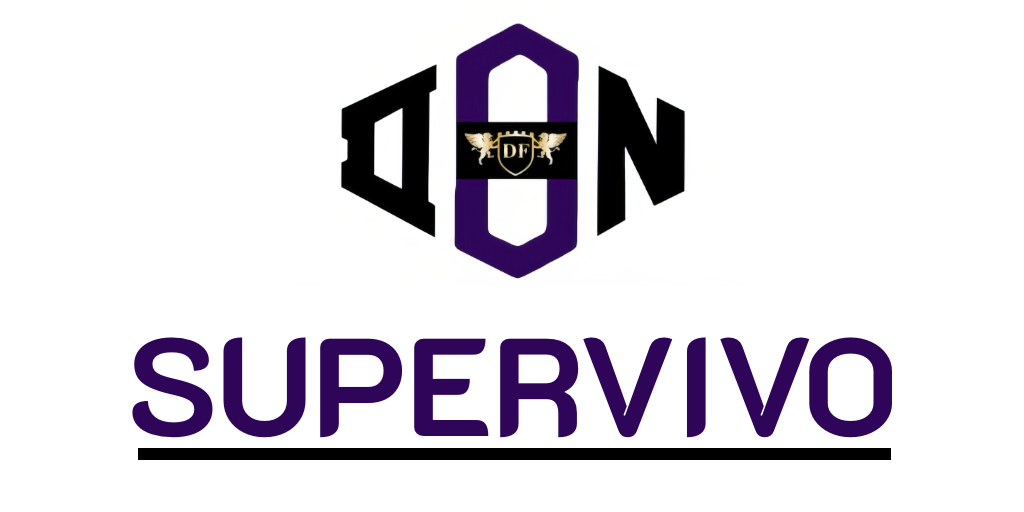In the fast-evolving landscape of artificial intelligence, data annotation plays a pivotal role in shaping successful AI models. However, one pressing question emerges for project managers and AI developers alike: how long should one expect to wait for feedback from data annotation companies? This article explores the critical aspects surrounding data labelling response times, offering valuable insights into AI data annotation project response timelines. By understanding the nuances influencing these response times, we aim to provide a comprehensive guide that sets realistic expectations while enhancing communication with annotation services.
Understanding Data Annotation and Its Importance
Data annotation plays a vital role in the world of artificial intelligence. This process involves the meticulous labelling of data, allowing machine learning models to interpret and learn from the information provided. By understanding data annotation, we appreciate its significance in training AI systems effectively.
What is Data Annotation?
Data annotation refers to the technique of tagging or categorising data to enable machines to understand it better. Various methods are employed in this process, including:
- Image tagging, where images are annotated with labels to train visual recognition models.
- Text classification, allowing natural language processing models to interpret written content accurately.
- Audio transcription, transforming spoken words into written form for analysis.
The diversity in techniques illustrates the importance of data labelling in creating robust AI systems.
Significance of Data Annotation in AI Development
The importance of data annotation cannot be overstated in the realm of AI development. High-quality annotated data serves as the backbone for developing efficient algorithms. Precise data labelling enables AI systems to achieve remarkable accuracy and performance. Research highlights a strong link between effective data annotation and the successful implementation of AI technologies across various industries.

Data Annotation Tech How Long To Hear Back
Engaging a data annotation service can lead to anticipation regarding how quickly a response can be expected. Understanding the timeline for feedback is crucial for clients as they navigate their AI projects. Typical data annotation service lead time varies, influenced by various factors such as project size and complexity.
Clients preparing their project timelines should consider the standard practices of leading annotation platforms. Generally, annotation platform response time may vary from a few days to several weeks. Smaller projects with clear guidelines tend to yield quicker results, while larger or more intricate tasks may require additional time for accurate annotation.
Adapting expectations based on these insights can aid in smooth project management and reduced stress. Preparing for potential delays while also recognising the possibility of expedited responses can enhance overall project readiness.
The Factors Influencing Response Times
Understanding the factors that influence response times from data annotation services can be vital for efficient project management. Two primary elements significantly impact the turnaround time for data tagging: project complexity and volume of requests coupled with the resources available to the annotation firm.
Project Complexity and Size
The intricacy of a project can greatly determine the time it takes to receive feedback. Larger or more detailed projects typically require meticulous attention, extending the turnaround time for data tagging. Complex data sets demand a higher level of analysis and a more skilled workforce, thus increasing the time required for completion. Clients should carefully assess the expectations around timing, ensuring they allow adequate margins for intricate projects.
Volume of Requests and Resources Available
The overall volume of requests that an annotation company is handling can also affect response times. When an organisation is inundated with numerous projects, its capacity to manage each one promptly could diminish. Furthermore, the resources available—such as team size and technological capabilities—play a crucial role. A well-resourced annotation team can handle increased workloads efficiently, reducing the turnaround time for data tagging. Understanding these dynamics aids clients in setting realistic timelines for their projects.
Typical Turnaround Times Across Different Services
Understanding the AI annotation turnaround times across various data annotation services is crucial for businesses looking to optimise their projects. Various platforms offer differing lead times which can significantly impact timeline management and overall project efficiency. By reviewing concrete statistics available within the industry, clients can make more informed choices when selecting partners for their data tagging needs.
Comparing AI Annotation Turnaround Times
Different data annotation services have varying average turnaround times, influenced by factors such as the complexity of the task and the accuracy required. Here is a summary of common turnaround times based on recent analyses:
- Image Annotation: 24-48 hours
- Text Annotation: 48-72 hours
- Object Detection: 36-60 hours
- Audio Transcription: 48-96 hours
Standard Lead Times for Data Tagging Services
The standard lead times for data tagging services can vary widely. Knowing these averages helps clients clearly understand what to expect:
- Basic Data Tagging: 24 hours
- Moderate Data Tagging: 3-5 days
- Complex Tagging Projects: 1-2 weeks
Setting Realistic Expectations for Your Projects
In the evolving landscape of artificial intelligence, data annotation plays a crucial role in the success of machine learning projects. Understandably, organisations desire clarity concerning deadlines when embarking on these initiatives. Setting realistic expectations for machine learning data labelling timeframes is essential for enabling smooth project execution. By understanding these timeframes, stakeholders can allocate resources more effectively and avoid anxiety associated with unexpected delays.
What to Anticipate for Machine Learning Data Labelling Timeframes
When it comes to machine learning data labelling timeframes, various factors will influence how long a project may take. Clients should consider aspects such as the complexity of the data, required accuracy levels, and the volume of data that needs to be annotated. Adequate planning can ensure that you are not caught off guard by the intricacies involved in the annotation process.
- Project Complexity: More complex data generally requires intricate labelling, which can extend timeframe estimates.
- Volume of Data: Large datasets will naturally demand more time for annotation, regardless of the method used.
- Annotation Quality: Higher standards in data labelling may necessitate extended review processes, further affecting timelines.
How to Manage Your AI Annotation Project Timeline
Effective management of your AI annotation project timeline becomes paramount once realistic expectations are set. Fostering open communication with annotation service providers can play a significant role in this process. Regular updates about the status of the project can help avoid misunderstandings while ensuring that the project remains on track.
- Define clear objectives and deliverables at the onset of the project.
- Integrate buffer periods into your timeline to account for potential delays in the annotation process.
- Establish a system for reviewing and providing feedback on initial outputs to facilitate swift adjustments.
Improving Communication with Data Annotation Companies
Effective communication forms the backbone of successful partnerships with data annotation companies. Establishing clear lines of dialogue can greatly enhance collaboration and ensure smoother project execution. Striving for best practices in engaging with annotation platforms positions both parties for success.
Best Practices for Engaging with Annotation Platforms
Building a productive relationship requires careful planning and thoughtful interaction. Consider the following best practices:
- Develop comprehensive project briefs that detail expectations and requirements.
- Establish realistic timelines for project milestones and deliverables.
- Encourage regular updates throughout the data labelling process.
- Offer constructive feedback to refine future outputs and improve quality.
Why Transparency is Key in the Data Labelling Process
Transparency fosters trust and understanding between clients and annotation companies. Open communication regarding potential challenges and changes can significantly impact project outcomes. When both parties are clear about constraints and expectations, they can work together to achieve goals more efficiently. Emphasising the importance of being upfront in discussions leads to better resource allocation, ultimately improving communication and enhancing productivity.
Case Studies: Real-World Examples of Response Times
Examining real-world examples of response times provides valuable insights into the dynamics of data annotation services. By observing the experiences of various companies, we can better understand how different approaches affect turnaround times and service satisfaction.
Company A: Rapid Feedback from an Annotation Service
Company A partnered with a well-regarded data annotation service to enhance its machine learning algorithms. Thanks to clear communication and defined project scopes, they experienced remarkably quick turnaround times. The efficiency stemmed from the annotation team’s deep understanding of the project requirements and a streamlined workflow. Data annotation service feedback indicated high levels of client satisfaction due to the rapid feedback provided, which allowed Company A to iterate quickly on their models and maintain momentum throughout the project.
Company B: Lessons Learned from Delayed Responses
In contrast, Company B faced significant delays when working with a different data annotation service. Initial enthusiasm turned into frustration as projects lagged behind schedule. Factors contributing to this setback included unclear instructions and an overwhelming volume of concurrent requests. The data annotation service feedback received highlighted the need for improved project management and clearer communication channels. This experience educated Company B on the importance of choosing the right service provider and maintaining an open dialogue to mitigate potential delays.
Future Trends in Data Annotation Response Times
As we look ahead, the future trends in data annotation promise to reshape the landscape of response times in data labelling significantly. With the rapid development of artificial intelligence technologies, it is expected that automation will play a crucial role in accelerating annotation processes. This advancement will not only improve efficiency but also enable a more streamlined workflow, responding to the increasing demand for high-quality annotated data in various industries.
Moreover, as client expectations continue to evolve, data annotation companies will need to adapt swiftly to meet these new standards. The pressure for quicker turnaround times will likely lead to innovative solutions, integrating advanced tools and methodologies that harness machine learning capabilities. This evolution will set a new benchmark for response times in data labelling, with organisations striving to deliver better service while maintaining accuracy and quality.
In conclusion, embracing the potential of these future trends in data annotation will not only enhance response times but will also redefine collaboration dynamics between clients and annotation providers. As technology advances, the possibilities are boundless, inviting a future where efficiency and quality coalesce to pave the way for greater achievements in the realm of artificial intelligence.









